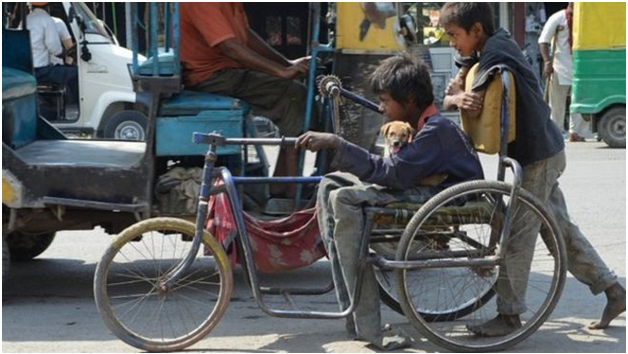The Pavlovian Response to Disability

NEW DELHI: In many cultures, disability is seen as ‘evil’ or something to feared of and this is reason why many a times a disabled man is SHOWN villain or by showing a disabled woman as a witch. We have seen this in many stories; many movies and even mythologies are also not bereft of that where disabled characters were portrayed as ‘evil’ and ‘cunning’. The best example of that being Dhirtharashtra in Mahabharata and Manthara in Ramayana, both examples of Indian epics.
These evil characters were not just happened to be disabled by sheer co-incidence but their identities were carefully constructed. These identities leave huge impact on the ‘psyche’ of the society at large towards persons with disabilities when they read these texts. This ‘psyche’ is filled with negativity towards disabled people whether or not a disabled person is evil or not in his/her life.
Another marker of pervasive violence towards disabled people across cultures is their portrayal in public. How portrayal of disability in a mass medium affects the attitudes of societies towards disabled people can be explained with Pavlov’s experiment. Ivan Pavlov was a Russian physiologist who got a Nobel Prize in 1904 for his experiment on ‘classical conditioning’. In the experiment, Pavlov showed that when a dog is presented with a bowl of food in front, the dog starts salivating (to put it simply, dog’s mouth starts watering when it saw food, which is a natural reaction). Pavlov continued to repeat the same experiment and every time a bowl of food was put in front, dog salivated.
At one point, Pavlov removed the food from the bowl but the dog still salivated. This was interesting since dogs learnt to associate food with the bowl and in the anticipation that bowl comes with food, dogs started salivating even when there was no food! So, food was leading to salivation earlier, in later stages even a subject associated with food led to the same conclusion i.e salivation.
Now coming back to the point, the same process of Pavlov’s experiment happens in the case of disability. Here, when audience or readers or viewers look at the portrayals of disabled person as cunning, evil, talking or walking in a particular way, they continue to attach these same attributes to any disabled person when they come in contact with in real life, even when a disabled person may or may not be cunning or evil. This is because the behaviour of audiences changes fundamentally.
Their ‘classic conditioning’ as Pavlov put it in his experiment, has already happened by then. As a result, societies where disabled people are portrayed in a negative life, it leads to attitudinal change towards disabled people in real life.
The next factor which associates violence with disability is that of poverty. Poverty and disability go hand in hand due to various factors. Poverty can make people disabled due a range of factors which includes high risk to diseases, malnutrition, under nutrition, poor health facilities, no or very less medical care at the time of need etc. On the other hand, disability can also lead to poverty.
This is because a person with disability has a comparatively very less chance of getting employed than an able-bodied person leading to unemployment or if employed, getting very poor wages. All that leads to poverty, especially if the person is the sole bread-earner of the family, the entire family becomes poor. Disabled population is therefore the poorest segment of populations across societies.
Poverty in itself is a mark of dissatisfaction, inequality and prevalent ‘structural violence’ in a society which have the potential to erupt into actual violence turning the situation of ‘negative peace’ in societies into a situation of ‘no peace’. This correlation between disability and poverty, establishes the point that societies with more disabled people are less developed and more violent in nature because of more poverty existing there.
World Bank disability overview points out that “persons with disabilities, on average as a group, are more likely to experience adverse socio-economic outcomes than persons without disabilities, such as less education, poorer health outcomes, lower levels of employment, and higher poverty rates. A country’s economic, legislative, physical, and social environment may create or maintain barriers to the participation of people with disabilities in economic, civic, and community life”.
The World Health Organisation in its first report on disability mentions in its chapter ‘Disability and Poverty’ that “Persons with disabilities experience worse educational and labour market outcomes and are more likely to be poor than persons without disabilities”. It also mentions that persons with disability have lower employment rates and lower educational attainment than persons without disability.
In every sphere, disabled person’s life is pervaded with violence in some form or the other, the magnitude of this violence might differ, but its existence can’t be denied.



